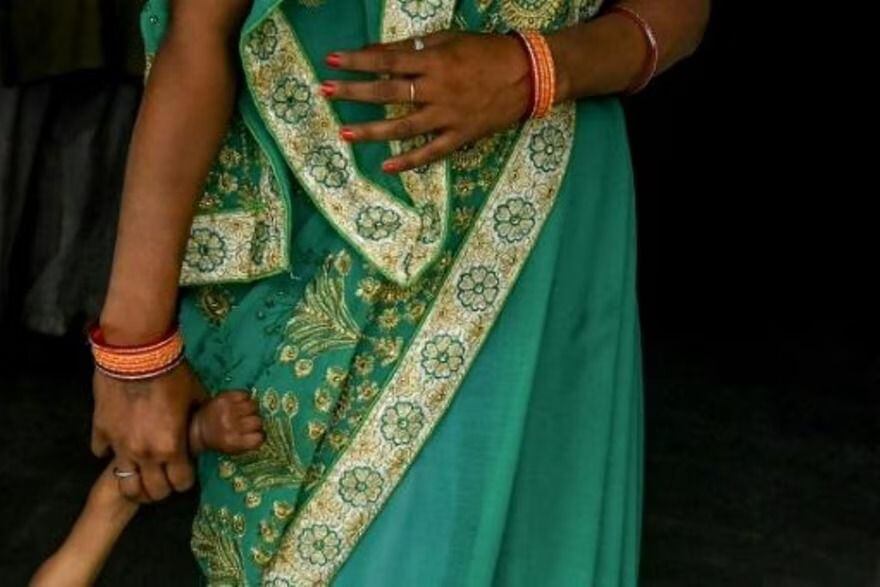
In a rural clinic Indiascreams of pain echo through the surgical suite as Kajal, under heavy sedation, awaits her turn for her sterilizationthe first method of Family planning in the country.
“The anesthesia will not have taken effect yet”says a medical assistant outside the Bhoodbaral clinic in the north of the country, where women with their heads covered in colorful scarves wait to undergo a tubal ligation.
This procedure, not without its dangers in medical centers in rural India, takes about 50 minutes.
Kajal, 25, and her husband Deepak, barely making ends meet with their three children, decided to have her sterilized. The option of a vasectomy for him, which takes about 10 minutes, was out.
“I think it would make me weaker”says Deepak, who works in a factory.
India is on track to become the world’s most populous country, according to UN estimates released last Wednesday. By the middle of this year it will have more people than China, whose population fell last year for the first time since 1960.
India was the first country to adopt family planning as official policy in 1952, but after a notoriously unpopular sterilization campaign for men in the 1970s, the accent shifted to women.
Although men have the option of having a non-invasive vasectomy, women like Kajal are often enticed by government medical professionals to undergo the operation, with in-kind compensation amounting to about $25.
Vasectomy… impotence?
According to Poonam Muttreja of the NGO Population Foundation of India, the misgivings expressed by Deepak are commonplace in this “very patriarchal society”.
“The most widespread myth (of vasectomy) among men and women is that a man loses his virility”says Muttreja.
“It is simply a belief. But belief is reality for people.” in India, explains the woman.
“People mistakenly believe that no-scalpel vasectomy leads to impotence”confirms Dr. Ashish Garg, medical superintendent of the Bhoodbaral health center. “It’s taboo”Add.
From April 2022 to March this year, more than 180 women against only six men were sterilized in this center.
Sterilization centers are numerous in India, particularly in the vast rural areas where two-thirds of its population live and where the quality of surgical procedures lacks.
Last year, four women died and nine others had to be hospitalized after sterilization in the southern state of Telangana.
In 2014, at least eleven women died after being sterilized at a center in the central state of Chhattisgarh.
According to Muttreja, the government must do more to promote contraception. “It’s a magic pill”says this activist, who also stresses the need to convince men to sterilize themselves.
Harbir Singh, a 64-year-old resident of Bhoodbaral, is not giving up. For him, a vasectomy deprives men of the “force” they need to work and feed the family.
“The man must go out and bring money (…) The women cook and stay at home”assures.
This mentality will not change if it is not with political will and a better education, estimates Poonam Muttreja.
“Investing in health and education reduces economic costs for the family but also for the country.”
Source: AFP
Source: Gestion
Ricardo is a renowned author and journalist, known for his exceptional writing on top-news stories. He currently works as a writer at the 247 News Agency, where he is known for his ability to deliver breaking news and insightful analysis on the most pressing issues of the day.












